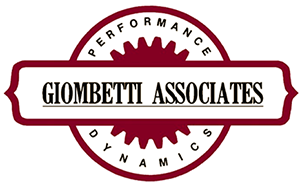
Also known as succession planning, ascension planning is essential to the successful growth of any organization. It’s a strategic process for identifying and developing future leadership, ensuring smooth transitions in key roles and providing clear pathways for career development.
It’s important to develop strategies for effective ascension planning that help you retain top-tier talent and avoid the disruptions and loss of institutional knowledge that can come with unplanned-for changes in leadership.
The Positive Impact of Ascension Planning
Unexpected changes in leadership and loss of institutional knowledge can stop an organization in its tracks. Precious resources are diverted to rebuilding, restructuring and re-learning. It’s an avoidable scenario, provided we invest in a program of strategic ascension planning.
An effective ascension planning program:
- Keeps the business running smoothly. When key leaders move on—whether they retire, change roles or leave the company—having a plan in place keeps things from falling apart. With the right people already prepared to step up, transitions happen smoothly and productivity stays on track.
- Invests in your people. When employees see a clear path forward in their careers, they’re more motivated and engaged. By identifying future leaders early, companies can provide the right training and support to help team members grow into roles with greater responsibility.
- Boosts retention and loyalty. When people know their growth is valued, they’re more likely to stick around. A transparent ascension plan shows employees the company is committed to their long-term success, which reduces turnover and builds loyalty.
- Builds a reliable leadership pipeline. Rather than scrambling to fill leadership roles, organizations with strong ascension plans always have someone ready to step in. These internal candidates already understand the company’s culture and operations, making the transition faster and more seamless.
- Helps spot gaps before they become problems. Ascension planning isn’t just about the people—it’s also a strategic tool. It helps leaders identify where there might be gaps in skills or leadership, so they can act ahead of time through training or strategic hiring.
- Leads to better decision making. With a clear view of who’s ready for what, leadership decisions become more thoughtful and informed. Plus, the focus on developing well-rounded leaders means future decision-makers are equipped to handle both big-picture strategy and day-to-day operations.
- Makes the company more agile. Things change fast in business. When you have trained leaders ready to move up, your organization can pivot more easily—whether it’s scaling up, navigating a crisis or shifting strategies.
- Strengthens company culture. Promoting from within helps preserve your company’s values and vision. It shows employees that growth is possible, which builds trust, morale and a stronger sense of community.
Ascension planning isn’t just about filling roles—it’s about future-proofing your organization. It nurtures talent, creates stability during transitions and builds a culture where people feel supported, valued and inspired to grow.
Maintaining Your Program and Keeping It Relevant
When you are satisfied with your strategies for effective ascension planning, you can move forward to implementing the program. As time goes on, it’s important to make sure the process stays relevant and continues to bring value over time.
Here are some practical ways to keep it effective and evolving:
- Monitor and evaluate progress regularly. Keep an eye on how your future leaders are developing. Are they hitting key milestones? Are there any areas where they need extra support or training? Regular check-ins with mentors, managers and the individuals themselves can highlight what’s working and what might need adjusting. Tie these evaluations into performance reviews to see if candidates are growing in line with the roles they’re preparing for.
- Keep development going. Just because someone’s been identified as a future leader doesn’t mean the learning stops. Offer continuous training, mentoring and real-world opportunities to build leadership skills. Let them explore other departments or roles to broaden their perspective. Encourage them to take initiative in their own development, like attending conferences or earning certifications.
- Revisit the plan as things change. Businesses shift, and your ascension plan should shift with them. Regularly review your strategy to make sure it still aligns with your goals, market trends and team dynamics. After any major change—like a new CEO or departmental restructuring—take another look at your succession map and make updates as needed.
- Promote from within at a steady pace. Leadership transitions don’t have to be all at once. Gradually increase responsibilities so future leaders can grow into their roles with confidence. Let them shadow current leaders or take on strategic projects while still under guidance. This gives them time to learn, adjust and succeed.
- Keep communication open. Be transparent with future leaders about where they stand and what’s expected. Share progress and challenges regularly to keep everyone aligned. Invite feedback from those going through the process, so you can spot gaps or areas for improvement.
- Build connections across the company. Encourage emerging leaders to collaborate with senior leadership and peers in other teams. These relationships build trust and help create a supportive environment for new leaders. Consider forming peer networks or cohorts to share ideas, support each other and grow together.
- Focus on knowledge transfer. When leaders move on, they take a lot of know-how with them. Make sure important processes, lessons and insights are documented and shared. Mentoring relationships play a big role here, too—future leaders can learn a lot from those who’ve walked the path before them.
- Recognize and celebrate progress. Public recognition goes a long way. When someone reaches a new milestone in the ascension process, celebrate it. Sharing success stories boosts morale and shows others that growth from within is possible and encouraged.
- Be ready for the unexpected. Even the best plans need a backup. Unexpected departures or changes can happen, so it’s smart to have contingency plans. Make your strategy flexible enough to adapt to shifts in business direction or changes in someone’s career goals.
- Make diversity and inclusion a priority. Ascension planning is a chance to build a leadership team that truly reflects your workforce. Make your process inclusive and give equal opportunities to all, especially those from underrepresented groups. Be aware of unconscious bias and commit to fair, equitable development.
In short, ascension planning isn’t a set-it-and-forget-it effort. It’s a dynamic, ongoing process that needs attention, adaptation and care. Done right, it helps build a stronger organization with leaders who are ready to take on whatever comes next.
We’re Here To Help!
The experts at Giombetti Associates are here to help you develop strategies for effective ascension planning and turning those strategies into a solid program. We’ll help you recognize and understand the talent at your disposal and develop circumstances that enable that talent to develop and flourish. We will help you design a strategy to cultivate world-class “bench strength,” helping you build your bench with clearly defined training and development programs for next-level leaders, along with a solid plan for succession.
Interested in learning more? Reach out to us today and we’ll be happy to discuss.
